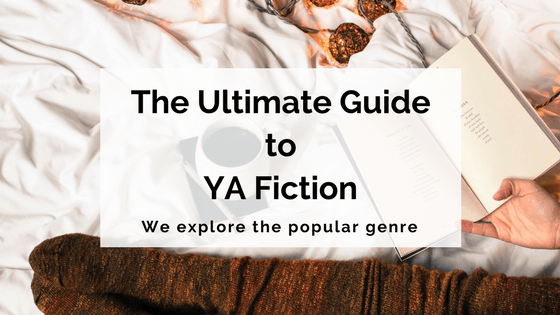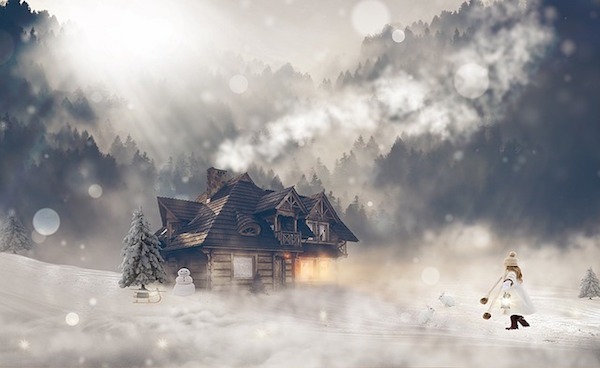Over the past decade, the Young Adult (YA) fiction market has grown so much, it’s a wonder authors are still writing adult books at all. In fact, a 2015 study found that young adults were more likely to have read a book in the last twelve months than any other age group.
Despite the continual exponential growth in the YA publishing market, YA fiction is still often completely misunderstood.

If you’re interested in writing fiction for young adults, this article will debunk the myths and misconceptions, highlight the common themes and tropes, and discuss the genres and sub-genres within the YA market to help you write your YA masterpiece.
Table Of Contents
What is YA fiction?
There’s a bit of a debate surrounding the actual definition of YA fiction. Some believe it’s a genre that features a protagonist between the ages of 14 and 18, but ‘young adult’ is not a standalone genre in the same way that ‘adult’ books are not a genre.
Essentially, YA novels are marketed (unsurprisingly) towards young adults aged between 14 and 18. But if you’re writing a YA novel, there are things other than your target audience that you should consider in order to classify your novel as YA.
You need a teenage protagonist
The most obvious characteristic of a YA novel is a teenage protagonist. Just as adult books feature adult characters, YA books feature characters who are young adults. The majority of protagonists in YA novels are high-school-aged, so your protagonist should most likely be between the ages of 12 and 18.
There are, of course, exceptions to this guideline where the protagonist is more university-aged than high-school-aged. For example, Cath in Fangirl by Rainbow Rowell is in her first year of college.
While some university-aged characters are protagonists in YA novels, recent years have seen the emergence of ‘new adult’ books that feature protagonists aged between 19 and 25.

Some of the problems should be age-appropriate
Because of the protagonist’s age, YA novels often include problems associated with growing up. This is particularly true in contemporary fiction where the story is set in the real world.
For example, the characters in John Corey Whaley’s contemporary YA novel, Highly Illogical Behaviour, are in their final year of high school and are trying to decide what comes next in their lives. This setting means that the characters face the stresses of exams, American college applications, and the potential separation from their closest friends that the next stage of life could bring.
While having problems relevant to the protagonist’s age is important, the challenges of growing up don’t have to be the story’s central obstacle. This is particularly obvious in YA novels of other genres, such as fantasy and dystopian.
For example, The Hunger Games by Suzanne Collins is one of the most popular YA novels of all time. The main obstacles its protagonist, Katniss, must overcome are on a much grander scale, including overthrowing a corrupt government to end the systematic oppression of her people.
Still, The Hunger Games features problems relevant to the young adult audience, such as the love triangle between Katniss and her two romantic interests.
YA is often presented in first person
YA novels are often told in first person because it allows readers to more easily connect to the characters. The Hunger Games, for example, is told through Katniss’ first-person perspective.
Another popular point of view, however, is close third person. In a close third person novel, the narrative focuses on one character’s perspective without speaking directly from that perspective (i.e. using ‘he’/’she’ instead of ‘I’). For example, J.K. Rowling’s Harry Potter series is told in close third person.
Just because these two POVs are the most common, that doesn’t mean you have to use them in your own writing. There are advantages and disadvantages to all the different POVs, so it’s important that you choose the right one for your story.

Misconceptions in YA fiction
YA fiction is sometimes surrounded by a cloud of negative misconceptions. For those writing YA fiction, it’s important to be aware of these misconceptions so that they don’t govern your own novel.
Children are the only ones to read YA
While the books are often targeted towards teenagers, the reality is that people of all ages can enjoy YA stories.
In fact, a 2012 study found that 55% of YA novel purchases are made by adults over the age of 18, and 78% of those adults purchase the book for their own reading.
The writing in YA is worse than in adult books
It’s easy to assume that YA novels aren’t written as well as adult novels because they’re targeted towards a younger audience, but that simply isn’t true. Publishers hold YA content to the same standard as adult books, so writing for a younger audience isn’t an excuse to write badly.
The YA publishing industry is just as competitive as the adult one, so it’s important to write as well as you can to give yourself the best chance of being published.

The themes in YA are immature
While it’s true that YA novels feature problems relative to the age of their protagonists, that doesn’t mean that YA fiction in general features immature themes. In fact, a lot of children’s and YA stories feature incredibly mature ideas.
For example, The Golden Compass by Philip Pullman is a fantasy novel that retells the story of Genesis from the Bible; The Fault in Our Stars by John Green follows two characters with terminal cancer; and The Book Thief by Markus Zusak is set in Nazi Germany and is told from the perspective of Death.
People who read YA can’t handle adult books
While all of these novels are marketed towards a younger audience, they explore incredibly profound ideas, including death and good versus evil. There is no limit to what can be included in a YA novel; anything an adult novel can feature can also be found in a YA novel.
Keep these misconceptions in the back of your mind when you sit down to write your novel. It’s important that you don’t let any of these guide your own writing; rather, your writing should help to debunk these myths!

Tropes in YA fiction
One of YA fiction’s biggest flaws is a reliance on tropes. YA novels of all genres can be guilty of overusing tropes, the most common of which are listed below.
‘The Chosen One’
We’ve all read a novel where the protagonist starts off seemingly completely normal, until they’re suddenly thrust into a new world and discover that only they have the power to fix the universe. A lot of YA fantasy and science fiction novels feature this trope.
J.K. Rowling’s Harry Potter is the most obvious example, but there’s also The Mortal Instruments by Cassandra Clare, and Ender’s Game by Orson Scott Card.
While ‘The Chosen One’ storylines are used often in YA novels, that doesn’t mean you should avoid them completely. This trope can still be successful if it’s written well, something that the above examples highlight.
The love triangle
While the love triangle is most common in YA contemporary novels, where romance and relationships are the most important plot points, this trope isn’t limited by genre. The love triangle trope describes a protagonist (usually female) who is torn between two love interests (usually male).
In the Twilight series by Stephenie Meyer, Bella must choose between Edward and Jacob; in The Hunger Games trilogy, Katniss must choose between Peeta and Gale; and in The Mortal Instruments series, Clary must choose between Jace and Simon.
While some love triangles are done quite poorly, a skilled writer can use this trope to completely shatter the hearts of readers. To read some emotional love triangle novels, check out this list by popular YA authors.
‘I’m different from other girls’
In an attempt to stray from the stereotypical cheerleader or bitchy teenage character, YA fiction has inadvertently created another trope: female protagonists who are ‘different from other girls’.
This kind of character usually isn’t interested in sex, drinking or rebellion, but rather excels at one art form or another, and enjoys reading classic literature.
There are a plethora of other tropes in YA fiction, just like there are in adult novels. While these ideas might be a little overdone, that doesn’t mean you have to steer clear of them. If your YA novel features a popular trope, try putting a twist on it to create something unexpected for your readers.

YA genres
Just like adult books, YA novels come in many different genres. Each has its own tropes and characteristics, and the most popular YA genres are explained below.
Fantasy
Just like adult fantasy books, YA fantasy novels are set in a world that’s different to our own and heavily features some kind of magic. In a fantasy novel, the protagonist is often pitted against a larger evil and must go on a journey to ensure that good prevails.
Because of this popular storyline, ‘The Chosen One’ is a trope regularly featured in YA fantasy novels.
Urban fantasy
In an urban fantasy, a hidden magical world is intertwined with our reality. In Harry Potter, the wizarding world is hidden within our current world, and the story takes place in both.
Urban fantasy novels were previously more popular than other YA fantasy sub-genres, but they aren’t so much anymore. However, it’s important to remember that trends are constantly changing and cycling around in the YA publishing industry.
Fairytale retellings
Currently a popular YA genre, a fairytale retelling takes the main points of popular fairytales and reworks them into a new story. The retelling can be set within our modern reality, or it can be used to create an entirely new fantasy world.
Fairytale retellings can also take the form of ‘what if?’ responses to the original fairytale. For example, Marissa Meyer’s Heartless gives some backstory to the Queen of Hearts’ character from Alice’s Adventures in Wonderland.
Paranormal
The paranormal novel features paranormal characters, such as vampires and werewolves, mixed together with human characters. Paranormal novels often differ from urban fantasy stories as they are mostly set around a romance between a paranormal character and a human character.

Dystopian
Ever since the release of the first Hunger Games book, the YA shelves have been stocked full of dystopian novels. Often published in trilogies, YA dystopians take place in our world after an apocalyptic event.
The world-ending event is often unnamed and the stories are usually set years after, when a new civilisation and government have already been established. The government is usually corrupt, and it’s the protagonist’s job to overthrow their power.
Science fiction-based
Some dystopian societies include advanced technology and feature elements from science fiction. The advancements in technology are often used to suppress the population and are associated with military power.
Fantasy-based
In other dystopian novels, the characters develop some sort of magical power, meaning the novel incorporates some elements of the fantasy genre. In a lot of dystopian novels featuring fantasy elements, these magical powers are shunned and cause conflict between societies.
End of the world
While most dystopian novels take place after an apocalyptic event, end-of-the-world novels occur during that event. This event can be anything from nuclear warfare to a natural disaster, and the characters must learn to survive in a world where the rules suddenly change drastically.

Contemporary
YA contemporary novels are set in the real world and focus on characters as they go through some sort of growth. The characters are often high-school-aged and go through a variety of problems related to their stage of life.
Romance/relationship-based
Many contemporary novels focus on the different relationships between characters. These can be romantic relationships but are also often relationships between family and friends. Love triangles are common within this contemporary subgenre.
Coming-of-age
The coming-of-age novel features a teenage protagonist growing up. The character goes through significant changes, either in their circumstances (such as graduating from high school) or as a result of an event (such as a death or breakup).
Magical realism
YA magical realism books aren’t very common. The ones that exist feature a magical element woven through the story, but everything else about the story is realistic. These novels are set in our world, and the characters face many problems and themes similar to other contemporary stories.

Historical Fiction
Similar to adult historical fiction, YA historical fiction is set in the past, often within the context of an important historical event, such as WWII.
Romance/relationship-based
YA historical fiction novels that use romance and relationships as major plot points are basically contemporary novels set in the past. These novels focus on the way historical events impact their characters, and many of the tropes and themes of YA contemporary novels translate well into YA historical fiction.
Urban fantasy-based
Some YA historical fiction novels feature urban fantasy elements, where the magical world is hidden within the world we already know. Here, the historical events of the novel’s time period are still important, but might not necessarily be the most important plot points.

Mystery/thriller
Mystery novels are relatively new to the YA market but are becoming more and more popular. They begin by posing a question, and the plot revolves around discovering the answer.
Mystery novels often take place within a realistic setting, so the mystery and contemporary genres share many characteristics.
Science fiction
YA science fiction novels are usually futuristic and feature technology beyond our current reach. Science fiction novels can be set in the future of our own world, or can take place in space or another universe altogether.
Dystopian sci-fi
The futuristic aspect of the science fiction genre means that it’s often linked with dystopian novels in YA publishing. Here, the technological advancements survive the apocalyptic event and are often used to guide or govern the dystopian society.
Steampunk
YA steampunk novels draw inspiration from steam-powered machinery and are therefore linked to historical fiction as well. Often set within the Victorian era, steampunk novels combine elements such as mad scientists with the quest for new knowledge.

Speculative fiction/alternate history
Defining speculative fiction is a little hard because it’s a very broad term. Speculative fiction stems from a ‘what if?’ question and deals with things that can’t happen in our world, things that never actually happened, or things that haven’t happened yet.
For example, Wolf by Wolf, an alternate history YA novel, answers the question, ‘What if Germany had won WWII?’, while Kiersten White’s And I Darken reimagines the story of Vlad the Impaler by recasting Vlad as a woman rather than a man.
Graphic novels/manga
YA graphic novels can take place in any genre whatsoever, from fantasy to contemporary, historical fiction to dystopian. The genre of the story will often determine the style of art.
Epistolary novels
An epistolary novel is a story written differently from straight prose. The novel can be written in the form of letters, journal entries or emails, but what’s more common in YA epistolary novels is for the story to be told through chat logs, text messages and social media posts.
YA epistolary novels can be told in any other genre, such as science fiction or historical fiction, but the genre obviously has to suit the storytelling method.
For example, an epistolary historical fiction story would be best told through letters or journal entries, while a contemporary novel would be better suited to social media posts and text messages.
Mixing YA fiction genres
A lot of YA novels blend different genres together, and that’s okay! There are no set rules when it comes to genre; rather, there are certain guidelines that might help you get started. If your novel doesn’t distinctly sit in one category but has elements from a few genres, you have nothing to worry about.

Writing YA fiction
Other than the tropes, misconceptions and genres, there’s still plenty you need to know about the YA publishing industry.
YA publishing is heavily influenced by trends
While this is true of all kinds of publishing, the YA publishing industry is particularly influenced by current trends. Twilight sparked a flood of paranormal romance novels and The Hunger Games did the same for dystopian novels.
Currently, the YA publishing industry is filled with fairytale retellings, like The Lunar Chronicles and Heartless, both by Marissa Meyer, and Dorothy Must Die and Stealing Snow by Danielle Paige.
This doesn’t mean you should only write novels that are on-trend, but you should keep the current industry trends in mind when deciding what kind of story you’d like to write. (Also keep in mind the fact that if you do try to write to a trend, it will have been overtaken by a new trend by the time your manuscript is ready to submit!)
Remember, publishers and agents will be inundated with manuscripts from popular genres, so writing something unique might help you stand out.
Writing diverse stories is important
The wider media and entertainment industry has been calling for more diversity for a few years now, and the YA publishing industry is no different.
The Sun is Also a Star by Nicola Yoon is one YA contemporary novel praised for its diversity. The novel is told with a dual point-of-view: Daniel, an intelligent Korean-American struggling to connect with the path laid out for him, and Natasa, an illegal Jamaican immigrant about to be deported.
When writing your YA novel, make sure you include diverse characters. Your novel should portray the variety in our lives: not everyone looks, feels or acts the same as you, and your novel should reflect that.

***
Remember, the key to writing YA fiction is to just start writing! You can go through your manuscript later and make sure you have all the elements you need to call your book YA. The most important thing is that you get your story down on the page!